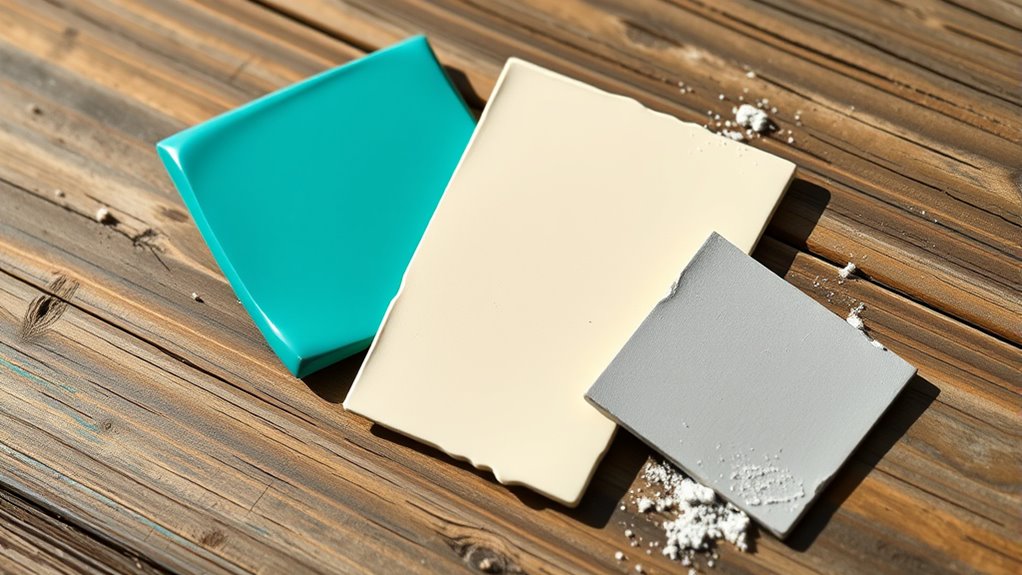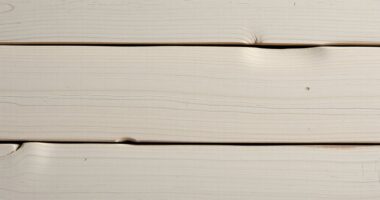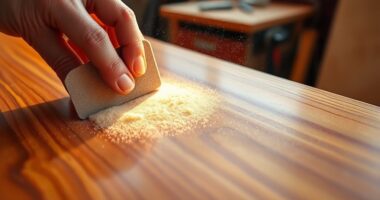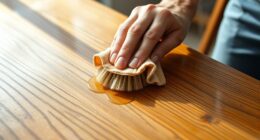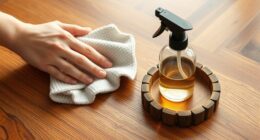When choosing furniture paint, consider your desired look and durability. Acrylic paints give a sleek, modern finish and are quite durable. Latex paints are versatile and forgiving during application, suitable for everyday use. Chalk paint offers a matte, vintage vibe but needs sealing for extra protection. Each type requires different brushes and techniques, so pick the option that best fits your style and needs. Keep exploring to find detailed tips for your project.
Key Takeaways
- Consider the desired style: chalk paint for vintage look, acrylic for modern shine, latex for versatile finishes.
- Match the paint’s durability to furniture use, with acrylic and latex offering more resilience for high-traffic pieces.
- Choose appropriate brushes: natural bristles for chalk paint, synthetic for acrylic, angled brushes for latex.
- Decide if sealing or waxing is needed: chalk paint often requires sealing for durability, while acrylic and latex are more resistant on their own.
- Evaluate application ease and drying time to select a paint type that fits your project timeline and skill level.
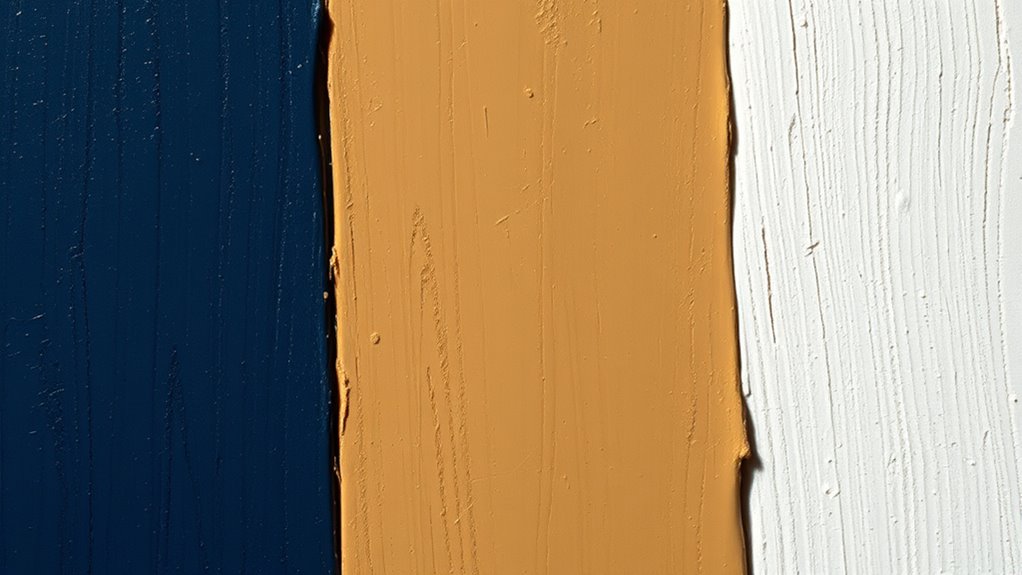
Choosing the right furniture paint can transform your pieces and give your space a fresh new look. When you’re deciding between acrylic, latex, and chalk paints, understanding their differences helps you make the best choice for your project. One key factor to contemplate is the type of brush you’ll need, which directly impacts the finish and the ease of application. For instance, if you opt for chalk paint, a soft, natural-bristle brush works best because it helps achieve a smooth, matte surface without leaving brush marks. Acrylic paints, on the other hand, tend to work well with synthetic brushes, offering fine control and a sleek finish. Latex paints are versatile and can be applied with various brush types, but a high-quality, angled brush often provides the best results for detailed work and smooth coverage.
Finish durability is another crucial aspect. If you’re looking for a piece that will withstand frequent use, acrylic paint generally offers a more durable finish, especially when sealed with a topcoat. It resists chipping and peeling better than chalk paint, which is more decorative and typically requires sealing to improve its durability. Latex paint also provides a resilient finish that holds up well over time, making it suitable for furniture that gets a lot of use. Chalk paint, although charming and easy to work with, is more delicate by nature. Without proper sealing, it can chip or scuff easily, so it’s ideal for decorative pieces or furniture that won’t face heavy wear.
When choosing your paint, think about the feel and look you want to achieve. Acrylic paint dries quickly and produces a smooth, glossy finish, perfect for modern, sleek furniture. Latex offers a similar appearance but is often more forgiving during application, allowing for a more forgiving, less streaky finish. Chalk paint creates a matte, vintage look that’s perfect for shabby-chic or farmhouse styles. Keep in mind that chalk paint often requires waxing or sealing to enhance its durability, especially in high-traffic areas.
Frequently Asked Questions
Which Paint Type Is Most Environmentally Friendly?
You’ll find that chalk paint is the most eco-friendly option because it often contains eco-friendly ingredients and uses natural rather than synthetic materials. Unlike acrylic and latex paints, which may have volatile organic compounds (VOCs) from synthetic chemicals, chalk paint generally emits fewer toxins. So, if you want a more environmentally conscious choice, go for chalk paint—it’s better for your home and the planet.
How Long Does Each Paint Type Last on Furniture?
Acrylic paint typically lasts 5-10 years on furniture, offering good durability with proper sealing. Latex paint usually endures 4-8 years, but it may require more maintenance over time. Chalk paint tends to last 2-5 years, often needing touch-ups due to its softer finish. Consider your paint durability and maintenance needs when choosing, as some paints may require frequent re-coating or sealing to preserve their look longer.
Can I Use These Paints Outdoors?
Over 80% of furniture painters ask if their paint can withstand outdoor conditions. You can use acrylic, latex, or chalk paints outdoors, but weatherproofing considerations are crucial. Acrylic and latex paints offer excellent water resistance and color retention properties, making them ideal for outdoor use. Chalk paint, while charming, needs a protective topcoat to withstand weather changes. Proper sealing guarantees your furniture stays vibrant and durable outside.
Do I Need to Prime Before Painting?
You should prime before painting to guarantee proper surface preparation and paint adhesion. Priming isn’t always necessary, but for best results—especially on bare wood, stained, or glossy surfaces—it’s a must. It helps prevent peeling and uneven coverage, making your paint last longer. Skipping priming can lead to issues down the line, so always assess your surface and follow priming necessity guidelines for a smooth, durable finish.
Are There Health Risks Associated With Each Paint?
You’re risking a health catastrophe if you ignore toxicity concerns with furniture paint! All three types—acrylic, latex, and chalk—emit paint fumes that can irritate your lungs or cause allergic reactions. Acrylics may have stronger fumes, while latex and chalk paints are generally safer but still release VOCs. Always work in well-ventilated areas, wear a mask, and check labels to minimize health risks.
Conclusion
When choosing furniture paint, you weigh your style, your needs, and your space. Whether you prefer the quick-drying convenience of acrylic, the flexibility of latex, or the vintage charm of chalk, each option offers unique benefits. Trust your instincts, consider your project, and embrace your creativity. By selecting the right paint, you transform your furniture, express your personality, and enjoy the satisfaction of a job well done. Ultimately, your furniture reflects your style—paint it with confidence.
